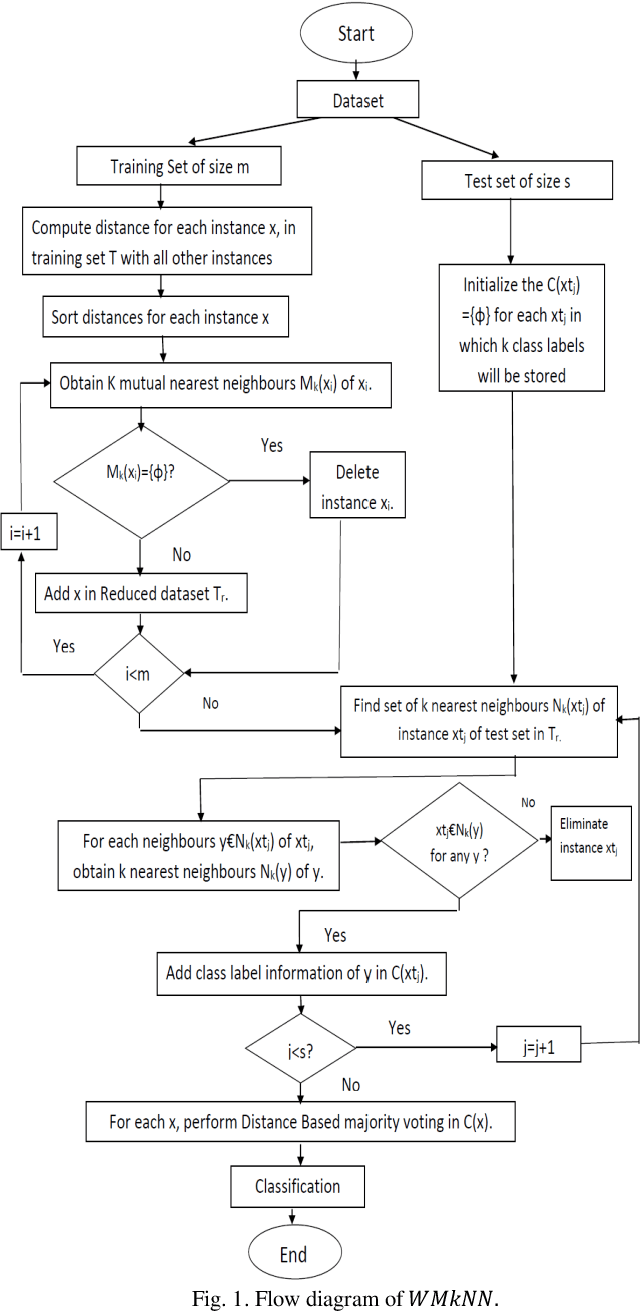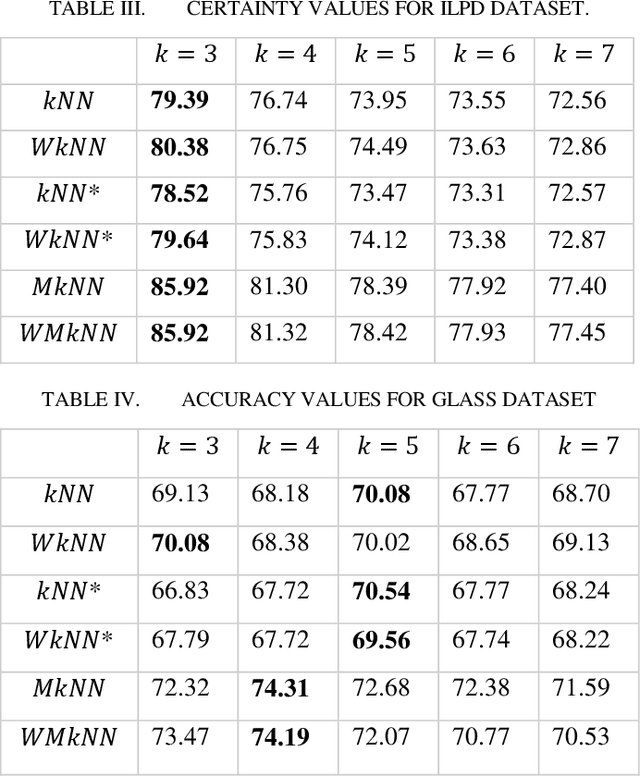Joydip Dhar
A Weighted Mutual k-Nearest Neighbour for Classification Mining
May 14, 2020

Abstract:kNN is a very effective Instance based learning method, and it is easy to implement. Due to heterogeneous nature of data, noises from different possible sources are also widespread in nature especially in case of large-scale databases. For noise elimination and effect of pseudo neighbours, in this paper, we propose a new learning algorithm which performs the task of anomaly detection and removal of pseudo neighbours from the dataset so as to provide comparative better results. This algorithm also tries to minimize effect of those neighbours which are distant. A concept of certainty measure is also introduced for experimental results. The advantage of using concept of mutual neighbours and distance-weighted voting is that, dataset will be refined after removal of anomaly and weightage concept compels to take into account more consideration of those neighbours, which are closer. Consequently, finally the performance of proposed algorithm is calculated.
Deep Reinforcement Learning for Single-Shot Diagnosis and Adaptation in Damaged Robots
Oct 02, 2019



Abstract:Robotics has proved to be an indispensable tool in many industrial as well as social applications, such as warehouse automation, manufacturing, disaster robotics, etc. In most of these scenarios, damage to the agent while accomplishing mission-critical tasks can result in failure. To enable robotic adaptation in such situations, the agent needs to adopt policies which are robust to a diverse set of damages and must do so with minimum computational complexity. We thus propose a damage aware control architecture which diagnoses the damage prior to gait selection while also incorporating domain randomization in the damage space for learning a robust policy. To implement damage awareness, we have used a Long Short Term Memory based supervised learning network which diagnoses the damage and predicts the type of damage. The main novelty of this approach is that only a single policy is trained to adapt against a wide variety of damages and the diagnosis is done in a single trial at the time of damage.
Emergence of Writing Systems Through Multi-Agent Cooperation
Oct 02, 2019

Abstract:Learning to communicate is considered an essential task to develop a general AI. While recent literature in language evolution has studied emergent language through discrete or continuous message symbols, there has been little work in the emergence of writing systems in artificial agents. In this paper, we present a referential game setup with two agents, where the mode of communication is a written language system that emerges during the play. We show that the agents can learn to coordinate successfully using this mode of communication. Further, we study how the game rules affect the writing system taxonomy by proposing a consistency metric.
 Add to Chrome
Add to Chrome Add to Firefox
Add to Firefox Add to Edge
Add to Edge